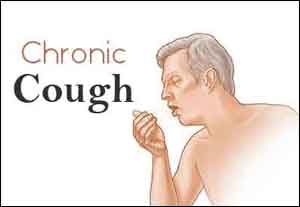- Home
- Editorial
- News
- Practice Guidelines
- Anesthesiology Guidelines
- Cancer Guidelines
- Cardiac Sciences Guidelines
- Critical Care Guidelines
- Dentistry Guidelines
- Dermatology Guidelines
- Diabetes and Endo Guidelines
- Diagnostics Guidelines
- ENT Guidelines
- Featured Practice Guidelines
- Gastroenterology Guidelines
- Geriatrics Guidelines
- Medicine Guidelines
- Nephrology Guidelines
- Neurosciences Guidelines
- Obs and Gynae Guidelines
- Ophthalmology Guidelines
- Orthopaedics Guidelines
- Paediatrics Guidelines
- Psychiatry Guidelines
- Pulmonology Guidelines
- Radiology Guidelines
- Surgery Guidelines
- Urology Guidelines
Diagnosis of cough at primary care setting: Indian Consensus document

Experienced pulmonologists from across India have developed an Indian consensus on the diagnosis of cough at primary care setting. The objective of this consensus document was to provide a structured and systematic approach for diagnosis of cough in the Indian scenario and to assist primary care physicians in effective cough management.
Diagnostic Approach Toward Cough
The recommended diagnostic approach toward cough diagnosis is presented as an algorithm. It involves history taking for differential diagnosis, and then ruling out other causes using relevant investigations, and finally confirming the definite diagnosis.
Duration of cough
Cough is classified into 3 categories on the basis of its duration in adults: acute (<3 weeks), subacute (between 3 and 8 weeks), and chronic (>8 weeks).
Acute Cough
Acute cough of viral origin should be treated empirically and may not require aggressive investigations unless it is characterized by “red flag signs that include:
- Hemoptysis
- Cough syncope
- Smokers’ cough especially in patients >35 years of age
- Immunosuppressive state
- History of tuberculosis (self or in a person who is in close contact)
- Hoarseness of voice
- Systemic symptoms such as weight loss, fever, sore throat
- Prominent dyspnea
The expert group recommended that, in the primary care setting, the red flag signs are important and relevant for any decision regarding diagnostic investigations or referral to a specialist.
Subacute cough
The most common conditions to consider in subacute cough are postinfectious cough, bacterial sinusitis, postnasal drip, and asthma. Most causes overlap with causes of acute and chronic cough. Patients with subacute cough are recommended to be first treated symptomatically.
Postinfectious cough
Postinfectious cough is the most common etiology of subacute cough. Pathogenesis of a postinfectious cough is unclear; however, the attributes are inflammation, epithelial damages of upper and lower airways, increased mucus secretion, and increased reactivity of airways. When cough is not associated with an obvious respiratory infection, the evaluation of patients is similar to that for chronic cough.
Chronic cough
Chronic cough could have multiple etiologies.
1.Clinical history and physical examination
Personal history taking is the key to identifying the cause of chronic cough. It should elicit history of smoking, exposure to irritants, and use of cough-inducing medications such as Angiotensin Converting Enzyme Inhibitors (ACEIs), βblockers, and Amiodarone. In case of such history, reconsidering the medications such as ACEIs, β-blockers, or Amiodarone, smoking cessation, and prevention of exposure to irritants may relieve the cough.
Persistence of cough after discontinuation of ACEIs raises the possibility of gastroesophageal reflux disease (GERD), postnasal drip, and asthma.
2.Other differential diagnoses of cough
a) Pulmonary tuberculosis
- Pulmonary tuberculosis should be suspected if cough persists beyond 2 weeks after the initiation of initial treatment and presence of suggestive signs and symptoms.
- All presumptive tuberculosis patients should be evaluated for sputum smear examination (spot–early morning or spot–spot). If the first sputum smear is positive and the patient is not at risk for drug-resistant tuberculosis, it is categorized as microbiologically confirmed tuberculosis.
b) Asthma
Asthma (25%) and nonasthmatic eosinophilic bronchitis (10%) are among the common causes of chronic cough. Although rarely performed in the Indian primary health care setting, spirometry can be employed to establish the diagnosis of asthma.
c) Gastroesophageal reflux disease
- GERD, singly or in combination with other conditions, can cause chronic cough. In patients with normal chest radiographic findings, GERD is the most likely cause of cough. However, accurate diagnosis of GERD-induced chronic cough is a major challenge. In addition, the consensus regarding the causal relationship between reflux and cough and the diagnostic approach to establish GERD etiology is lacking.
- Cough due to GERD can be ruled out by administering proton pump inhibitor therapy and monitoring the patient; if the patient improves, the diagnosis is confirmed as GERD. However, it takes approximately 3 months for true GERD-related cough to improve.
d) Upper airway cough syndrome
- Upper airway cough syndrome (UACS) is the cause of chronic cough in around 30% of patients, but disease pathogenesis is unclear. UACS is difficult to diagnose and treat because it often coexists with other disorders that contribute to chronic cough.
- In patients for whom a specific etiology of chronic cough is not apparent, empirical treatment can be initiated for about 15 days if UACS is considered as the etiology.
e) Environmental factors
- Environmental pollutants can cause airways to become hyperactive. Irritants such as sulfur, ozone, nitrous oxides, and indoor air pollution because of biomass combustions can cause chronic cough and asthma as the exposures are persistent.
- Family history of airway hyperactivity could be the deciding factor for cough caused due to pollution. Persons with comorbidities like chronic obstructive pulmonary disease are at more risk of cough due to environmental causes.
f) Overlapping etiologies
Chronic cough may set in because of multiple causes, which, in turn, may have overlapping symptoms posing challenge in the differential diagnosis.
Given the overlapping etiologies, asthma, GERD, and UACS should be managed with empirical treatment. Referral to a specialist is recommended if cough persists.
For further reference follow the link: http://www.japi.org/january_2019/26.html

Disclaimer: This site is primarily intended for healthcare professionals. Any content/information on this website does not replace the advice of medical and/or health professionals and should not be construed as medical/diagnostic advice/endorsement or prescription. Use of this site is subject to our terms of use, privacy policy, advertisement policy. © 2020 Minerva Medical Treatment Pvt Ltd